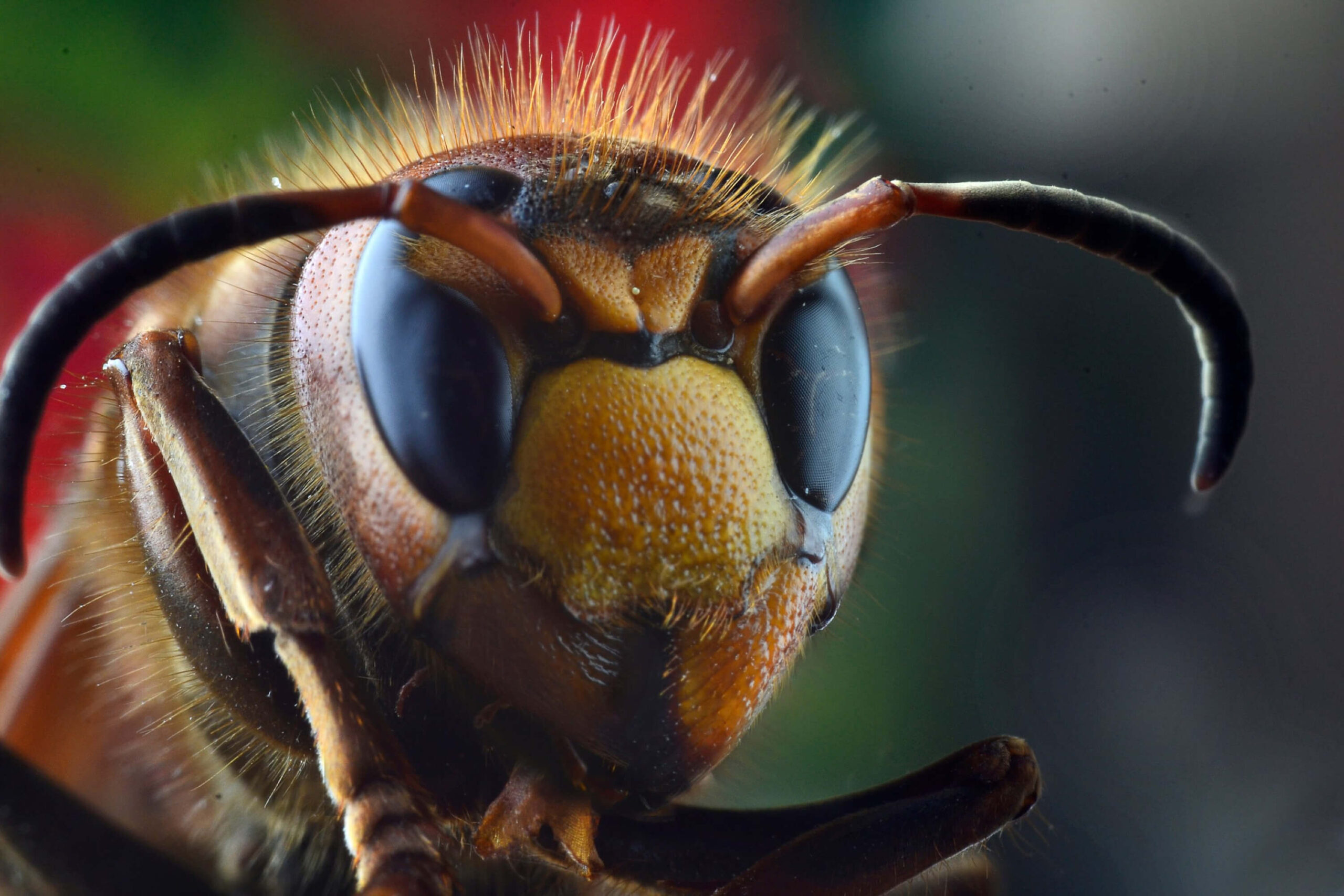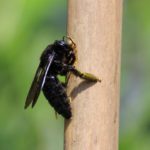Have you ever wondered what bees do around the clock? Yes, as we all know. They are busy during the day gathering nectars and pollens from the flowers, but what about at night? Can bees fly at night too? Do they also work at night? Do they continue to fly and gather pollens and nectar at night as they do during the day? Are delicate bee wings the secret to nature’s beauty? We all desire information about the world we live in. Do bees work shifts as humans do both during the day and night? Ah! Our brains are filled with so many questions, and to clear them up, I did some study on several bee species.
This world of ours is full of approximately 2 trillion bees and there are at least 20,000 distinct species of bees around the globe. As a result, bee species vary from one another. Both their art and their sting are unique. Most bee species are active during the day, but others can and even prefer to hunt when it is dim or completely dark. For a variety of reasons, these midnight bees are different from their daylight colleagues.
Let the detailed discussion begin!
Bee a Night Rider or Day Worker
As discussed above we know that there are different species of bees and some of them prefer to work at night. Which shows that they must fly to get nectar at night. So, can bees fly at night?
The answer is yes! Bees can fly at night but not all of them. There are, however, a few rare species of bees that can fly in low light and complete darkness. Those who can fly in complete darkness are known as nocturnal bees, which are mostly tropical species. They have evolved to be able to see, hunt, and fly during nighttime. They collect nectar and pollen from flowers (Like moonflower and night-blooming jasmine) that are open at night. And supply generous amounts of pollen and nectar. These nighttime bees have far less competition as compared to daytime bees for nectar and pollen.
Q. How Do They Fly During the Night?
If we compare ourselves with bees then these night rider bees can see in the dark which, unfortunately. We do not unless there is a dim light around us. These bees are also physically different from the day shift bees.
Nocturnal Bees have five eyes altogether. At the upper center of a bee’s head, they have three eyes, which are regarded as simple eyes or ocelli. Just like our own eyes, each of these ocelli has only one lens. The bee’s basic eyes aid in different directions by detecting polarized light as well as ultraviolet (UV) and infrared (IR) light.
However, the other two big sophisticated eyes, are known as compound eyes. Can create pictures and recognize patterns that help in the identification of certain plants or insects. The compound eyes have thousands of lenses with which the bee. Can see in all directions but it can only discern a single pixel at a time from an image. When all these little images are joined together, they create a whole image. With the help of this, the bee can see at night without any trouble. The compound eyes are large and take up much of the bee’s face. With the help of these special eyes which make they are unique from the diurnal bees. They can see and fly in the dark.
Nocturnal Shift Workers
Many bees are busy throughout the day (diurnal). Most bees are safely back in the nest before dusk, as their day work is done. However, for certain bees, the lowering sun signifies the start of a working night. Pollen and nectar collecting can take place in near-darkness for these nocturnal shift workers. Some animals are obligatory nocturnal because they feed all night and they can fly during the night. One species, a huge Indian carpenter bee of the genus Xylocopa (unidentified), forages even on the darkest moonless nights it can fly at night, even on darkest days. Others are Crepuscular, which means they are active just during the lighter hour (or so) soon after sunset or before daybreak. If the sky is illuminated by the moon, some of these bees may fly all night.
Since bees (all kind) heavily relies on their vision to eat, and the same is the case with nocturnal bees, all these night-flying bees must fight a challenging environment at night. Different nocturnal bees can survive varying degrees of darkness, but the majority need some light. The Indian Carpenter Bee, however, is superior to them because it can see and fly at night in total darkness without the help of the light from either moon or stars. The Indian Carpenter bee’s navigation skills are ideal for flying at night. It does not have to return to the hive before dusk, unlike other bees.
There is another nocturnal shift worker, the Sweat Bee Megalopta Genalis of Central America. Just after nightfall and before dawn are the two brief time windows when Megalopta Genalis is active beneath the dense rainforest. It may be nocturnal because of the structural modifications in its eyes that make it sensitive to light 27 times more than the diurnal bees. However, its eyes are still apposition compound eyes, which makes them not entirely different from those of other diurnal bees.
Additionally, their brain owns some unique neurons that help in processing dim light during the night. Furthermore, some recent studies on Megalopta Genalis have revealed that they employ more factors than only light sensitivity to be nocturnal. The dependability of their eyesight in low light is enhanced by a neuronal accumulation of prior experiences. They use the information stored in their brains to correctly land and fly across great distances in a variety of light conditions.
Bees Home Before Dark
Q. Can Diurnal Bees Fly at Night?
The majority of bee species come back home before dark as they fly during the day since this is when they are most productive, and they utilize the night to store up energy for the next day’s foraging.
Now if we talk about those bees that are common everywhere like Honey bees and bumble bees then the same question arises as before, Can Bumble bees and Honey bees see at night? Or can they fly at night like other nocturnal bees? So, the answer to these questions is that bees, such as honey bees and bumble bees, are unable to fly at night unless there is a dim light. Being diurnal, they can only fly and spread pollen during the day. But in the evening or when there is no light these bees may crawl but cannot fly.
Hamish Symington, a postgraduate at Cambridge University who is pursuing a Ph.D. in pollination, flowers, and food security, created the viral video that is all over the internet. However, his major goal is to improve pollen and nectar production in flowers so that they can produce more nectar and produce more pollen to help feed the world. He turns out the lab lights in the video, causing the flying bees to instantly fall to the ground. He claims to be astonished by the bees’ abrupt fall without making any attempt to land safely. After watching such videos people started brainstorming that is it possible. And if yes then how can bees fly at night? To answer such questions here are we to help you.
The video gives credence to the idea that most bees, including honey bees and bumble bees, are incapable of flying at night. These bees are diurnal, which means they only fly during the daytime as opposed to being nocturnal. They engage in all their primary tasks throughout the day, including hunting, flying, collecting pollen, and building outside the beehive. Although bees can crawl at night, their restricted agility limits how quickly they can complete tasks.
Diurnal Bees during Night Time
To see better in extremely low light, bees who have not evolved the ability to fly successfully at night and are not night shifters may apply image processing tricks. In this trick, they can extend the amount of time that their photoreceptors gather light before sending a signal using their brains.
Another approach they use is to gather all their photoreceptor signals and then combine them into a single mosaic picture. However, this can result in less detail in the photographs that are generated. Both methods are ineffective, and the nocturnal bees are better equipped to see at night thanks to their bigger eyes than these diurnal bees.
Honeybees can fly at night if there is light. The bees, either young or old, will fly out to investigate a disturbance if a dazzling light is shone onto them or their colony. Like many insects, bees have an innate tendency to fly toward bright lights at night. However, honeybees or bumble bees struggle to navigate on a typical, night and intuitively choose to crawl or sleep in their hive instead.
Now most of us are aware that honeybees or bumblebees return to their hives around dusk and they do not stay out longer. Bees often work through the night to maintain the hive’s temperature, remove waste, process their nectar, or pollen which they gather the previous day, and sleep. Yes, like other beings’ honeybees do sleep at night. The older bees prefer to sleep for a longer time, but the foragers often sleep for a shorter period after an exhausting day of searching for nectar and pollen. The young bees can remain busy during the night by maintaining their hive’s health and productivity. On the other hand, foraging bees spend a substantial portion of the night sleeping since they must work all day.
Are Honey Bees Crepuscular
There are two species of honey bees Apidae and Genus Apis, known as crepuscular. Crepuscular bees are those who can fly and collect pollen and nectar till twilight. These two species of honeybees can fly out if there is enough moonlight in the sky otherwise, they cannot fly at night in complete darkness.
Q. Can Diurnal Bees Easily Navigate Back Home at Night?
In total darkness, most bees are unable to find their homes, especially diurnal bees. The lowering of the sun signals bees to return to their nests or hives. Unfortunately, as the day becomes shorter during winter, bees have a harder time finding their way back to the colony after sunset.
To get back home diurnal bees use landmarks in addition to the position of the sun to find their food and return to their beehives. Bees are also thought to have a mental map of their environment that aids in guiding them back home after a long tiring day.
Before dusk, most bees return to the hives. But if a bee is unable to return before dark then that bee will, however, spend the night in a flower or another safe location.
A bee may become confused on its way home if there is insufficient light to assist it. The best possibility for the bee then is to stay put during the night and travel home after sunrise. This is because daytime bees lack the unique eyes and neurons that nocturnal bees possess. As previously stated, these diurnal bees cannot see at night, making it impossible for them to return home.
Final Thoughts
All bees, whether nocturnal or diurnal, are busy insects. This one query Can bees fly at night? arises so many questions in the human mind, and to find answers, we learned so much about these tiny creatures. Each species has a distinct specialty. For example, among an unlimited number of bees, only one may produce honey, which is the honey bee (diurnal)
This world is full of many kinds of bees, which aids us in finding answers to our previously stated questions. The vast majority of bees are diurnal, meaning they do not fly at night. Some are Crepuscular bees who fly in low light (dusk or dawn), but they do not fly at night. Others, such as the Indian Carpenter Bee, are nocturnal bees. This bee can fly at night in complete darkness.
We now have our answers, so relax! You will not see any bees following you at night, but if you live in a tropical or subtropical area, there is a good chance that you may come across nocturnal bees searching for flowers and nectar.




